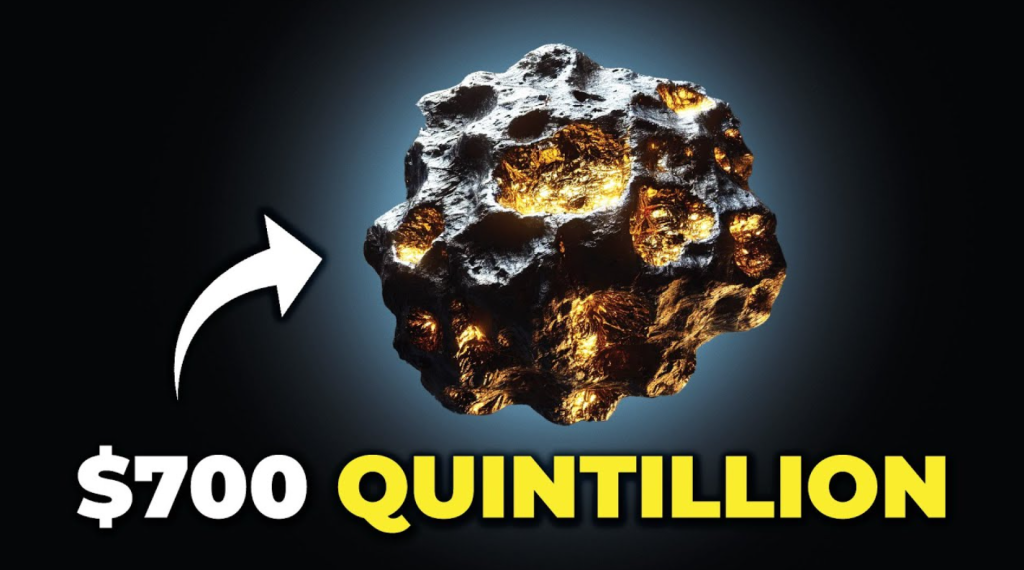Between Mars and Jupiter lies the asteroid belt—a vast region teeming with cosmic riches beyond anything found on Earth. One asteroid alone could, in theory, make every person on Earth a billionaire. This belt contains millions of space rocks, remnants of the early solar system, and potential keys to future wealth. Contrary to science fiction, these asteroids are incredibly spread out, making navigation through them easier than movies suggest. Each asteroid is like a cosmic safety deposit box, holding rare and valuable materials while also offering clues to our solar system’s history.

Asteroids are classified by their composition, each with unique resources. C-type (carbonaceous) asteroids make up 75% of known asteroids and contain carbon, organic materials, and water-bearing minerals. These could serve as future refueling stations for space exploration. S-type (silicaceous) asteroids, comprising about 17%, consist of silicate rocks mixed with nickel and iron, resembling Earth’s rocky makeup. However, the real prize lies in M-type (metallic) asteroids, composed of iron, nickel, and sometimes precious metals like platinum and gold. A single kilometer-wide M-type asteroid could hold more metal than has ever been mined on Earth.
The estimated value of the asteroid belt’s mineral wealth is $700 quintillion—a number so vast that, if evenly distributed, each person on Earth would receive around $100 billion. Extracting these resources could transform technology, making advanced materials affordable and eliminating shortages of critical elements. However, challenges remain, including the economic impact, technological feasibility, and legal complexities of space mining.
One particularly valuable asteroid is Psyche 16, a massive M-type asteroid thought to be primarily composed of iron and nickel. Estimated to be worth $10,000 quadrillion, Psyche 16 dwarfs the value of Earth’s entire economy. NASA’s Psyche Mission, launched in October 2023, aims to reach the asteroid by 2026, mapping its surface and analyzing its composition over 21 months. This mission could unlock new insights into planetary formation and pave the way for asteroid mining.
Private companies are also entering the space mining industry. California-based AstroForge launched its first test mission, Brokkr-1, in April 2023 aboard a SpaceX Falcon 9 rocket, experimenting with refining metals in microgravity. Their upcoming Brokkr-2 mission aims to journey to a near-Earth asteroid, testing technologies for future mining operations. If successful, this could mark the beginning of large-scale commercial asteroid mining.
However, tapping into asteroid wealth comes with economic risks. A sudden influx of gold, platinum, and other precious metals could flood the market, drastically lowering their value. While this could lead to technological advancements and cheaper materials, traditional mining industries on Earth might suffer, leading to job losses and economic downturns. Additionally, if only a few corporations or nations control asteroid mining, they could accumulate immense wealth and power, potentially deepening global inequality.
Legal issues also complicate space mining. The Outer Space Treaty of 1967 states that space belongs to all of humanity, preventing nations from claiming celestial bodies. However, it does not clearly address whether private companies can extract and own space resources. In 2015, the United States passed a law allowing its citizens to claim resources mined from asteroids, followed by similar legislation in Luxembourg. Yet, these laws are not universally accepted, raising concerns about conflicts over asteroid claims and environmental regulations.
As technology advances faster than legislation, the international community must establish clear guidelines to prevent disputes and ensure responsible space mining. Without proper regulation, competition for asteroid wealth could spark conflicts more significant than any seen on Earth. While the asteroid belt holds untold riches, determining who has the right to claim them remains an unsolved puzzle. As we move closer to making space mining a reality, addressing these legal and ethical challenges is just as crucial as overcoming the technological ones.